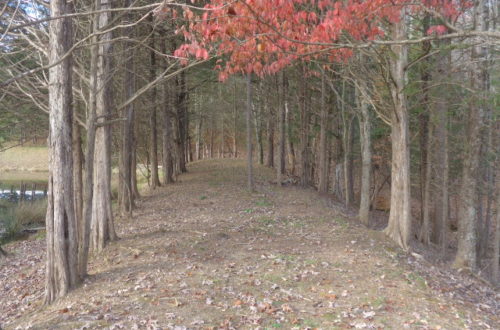
A Land of Hills and Valleys
For the land that you are entering to take possession of it is not like the land of Egypt, from which you have come, where you sowed your seed and irrigated it, like a garden of vegetables.
But the land that you are going over to possess is a land of hills and valleys, which drinks water by the rain from heaven, a land that the LORD your God cares for. The eyes of the LORD your God are always upon it, from the beginning of the year to the end of the year. (Deuteronomy 11:10-12 ESV)
Have you ever paid attention to the lay of the land of Egypt…
And the lay of the land the Israelites went in to possess…
Given the natural lay of the land, the Egyptians had to create their own irrigation system to collect rain water throughout the land in order to grow crops. Whereas the Promised Land had a series of hills and valleys that were naturally formed to do the job.
A Look at Permaculture
For the past few years my husband has been learning about Permaculture.
“Permaculture is a philosophy of working with, rather than against nature; of protracted and thoughtful observation rather than protracted and thoughtless action; of looking at systems in all their functions rather than asking only one yield of them…” – Bill Mollison, quote in “The Ultimate Guide in Permaculture” by Nicole Faires
I like the idea of working with creation, functioning in a way that is congruent with what the Creator had in mind.
The concept of hills and valleys is something I’ve never paid much attention to in the past. But after hearing my husband talk about it, and seeing what he’s done to tap into that concept in developing our gardens over the past two years, I’ve come to learn their value in enabling the land to drink in the rain.
So we’ve again been implementing hills and valleys in the design of our newest garden this year.
We then laid down some irrigation lines on the mounds just in case they were needed, covered the mounds with landscape cloth, and then filled the ditches with mulch.
The idea is that the rain would be channeled in from outside of the garden, in addition to holding whatever fell on the garden. The water would then fill in the valleys between the mounds and stay there, allowing the water to seep into the base of the mounds.
We did this two years ago and had wonderful results, except instead of using landscape cloth, we laid down plastic.

Unfortunately the plastic didn’t work out so well last year, so we’re opting to use landscape fabric this time around.
If we can harness how our entire property captures and distributes rainwater, I believe we can begin to improve the health of the overall land, enabling it to better drink in the rain going forward.
So each year we will continue to implement hills and valleys where needed in the gardens, as well as pay more attention to the current lay of our land and work with it to produce a desired result.
“For land that has drunk the rain that often falls on it, and produces a crop useful to those for whose sake it is cultivated, receives a blessing from God. But if it bears thorns and thistles, it is worthless and near to being cursed, and its end is to be burned.” (Hebrews 6:7-8 ESV)
Have you ever done something like this? If so, what were your results?








2 Comments
Rayah Didier
I LOVE what you guys are doing out there! I remember seeing some posts a year or so ago where you shared what you and Ty were doing to harness the water and make use of the lay of the land. I was SO impressed then and even more so as you continue to hone your methods.
Thank you for blogging about it too – I hope that one day we can follow in your footsteps (walking in the ways of our Creator).
Carrie
Thank you, Rayah. 🙂